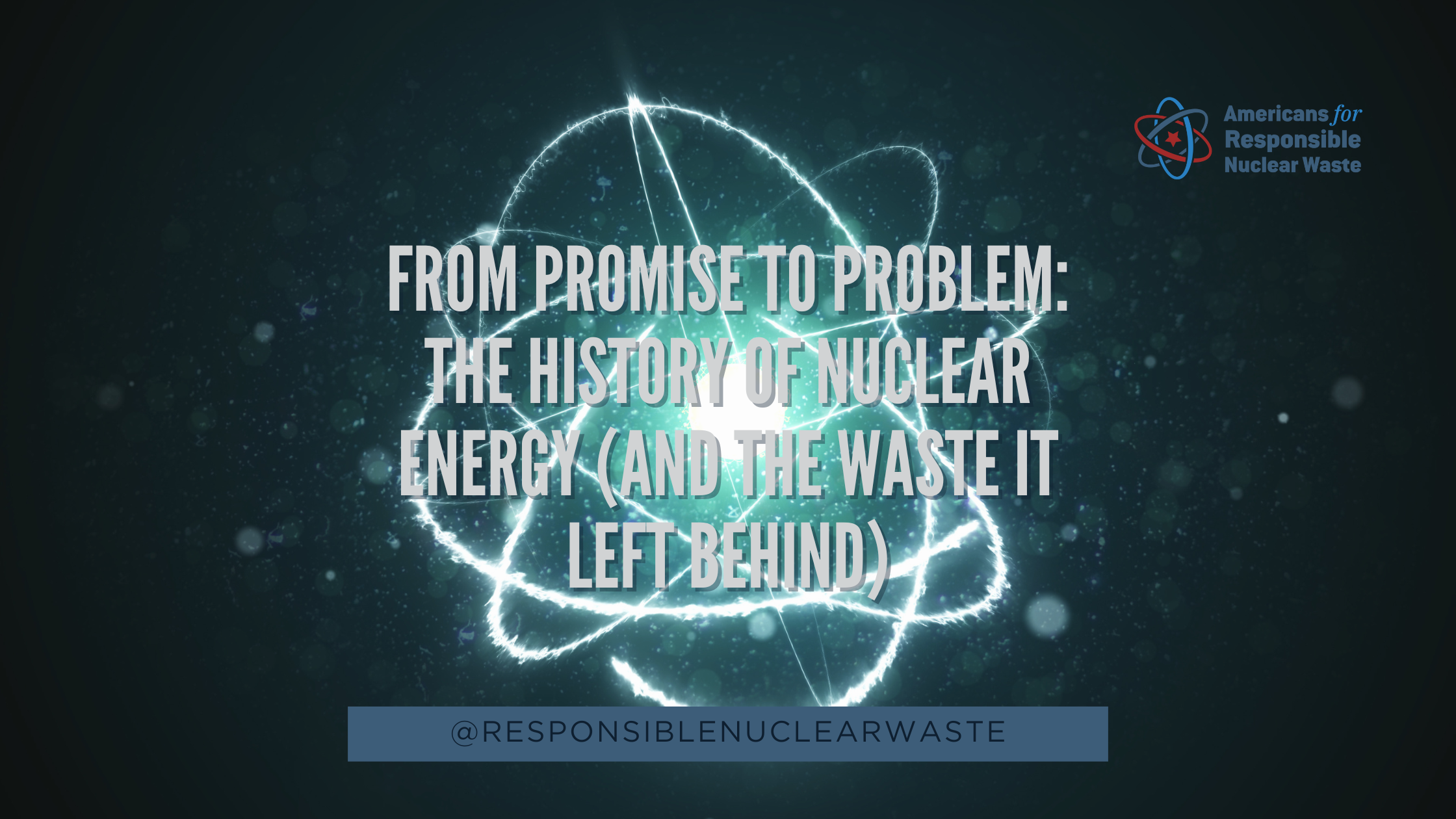From Promise to Problem: The History of Nuclear Energy (and the Waste it Left Behind)
Nuclear power has long been hailed as a miracle of modern science—cleaner than coal, more efficient than gas, and a cornerstone of 20th-century innovation. But behind the glowing promise lies a darker, unresolved challenge: what to do with the radioactive waste that nuclear energy leaves behind.
This is the story of how we got here.
The Rise of Nuclear Power
The first nuclear reactor was developed in the 1940s as part of the Manhattan Project. But it wasn’t until the 1950s that nuclear power entered the civilian spotlight. President Eisenhower’s “Atoms for Peace” speech in 1953 helped launch a wave of international interest in nuclear energy for electricity.
By the 1970s, nuclear energy was booming in the U.S. with dozens of plants generating power across the country. It was seen as clean, modern, and cost-effective.
The Waste Problem Emerges
Today, there are 92 commercial nuclear reactors operating at 54 nuclear power plant sites across the United States. Each of these generates radioactive waste that must be safely managed for thousands of years. From the beginning, scientists and government officials knew that nuclear energy came with a major downside: radioactive waste. Spent nuclear fuel remains hazardous for thousands of years and must be isolated from the environment.
The plan? Build permanent geological repositories that could store this waste safely.
But politics, lawsuits, and community opposition stalled every proposed site—including Yucca Mountain, the most well-known federal attempt. Decades passed, but no permanent facility was ever completed.
Transport Risks Nationwide
Because there is no permanent repository, nuclear waste is now being considered for transport across thousands of miles—through towns, cities, farmland, and alongside waterways—on rail and barge.
These routes would put hundreds of communities at risk. A single accident, derailment, or container breach could create long-term environmental damage, jeopardize drinking water, and devastate local economies.
Billions Collected, No Solution
In 1982, Congress created the Nuclear Waste Fund to finance permanent storage. Utilities—and ultimately ratepayers—began contributing billions.
Yet despite collecting over $40 billion, the U.S. still has no permanent nuclear waste repository. In the meantime, radioactive waste is being stored at reactor sites or moved to interim storage facilities—some of them in rural, marginalized communities.
Local Consent Ignored
Today, states like Texas and New Mexico are being targeted as dumping grounds for the nation’s nuclear waste. Communities have spoken out, but licensing continues under pressure from private companies and federal regulators.
What began as a promise of clean energy has become a fight for fairness, safety, and common sense.
The Supreme Court Could Set a Dangerous Precedent
Right now, the U.S. Supreme Court is reviewing whether the Nuclear Regulatory Commission had the legal authority to license a private waste storage facility in Texas without Congressional approval or state consent.
If the Court rules in favor of the NRC and Interim Storage Partners, it will set a precedent that:
Undermines the Nuclear Waste Policy Act
Strips states and local communities of their say in federal waste policy
Opens the door to indefinite storage in communities that never agreed to host it
This moment is a legal crossroads—and a moral one.
Where Do We Go From Here?
We must:
Demand a permanent solution that puts safety and science first
Ensure local communities have the right to consent—or say no
Hold the government accountable for managing the Nuclear Waste Fund
Nuclear energy may have a future—but only if we deal responsibly with the past.
Take Action:
Email Your Representative

